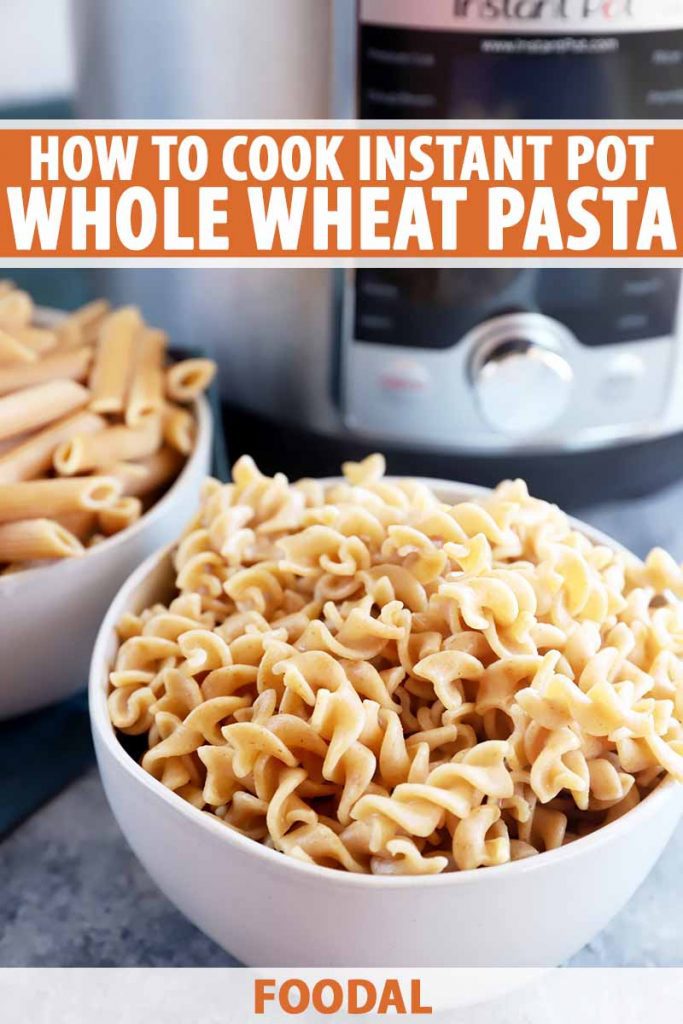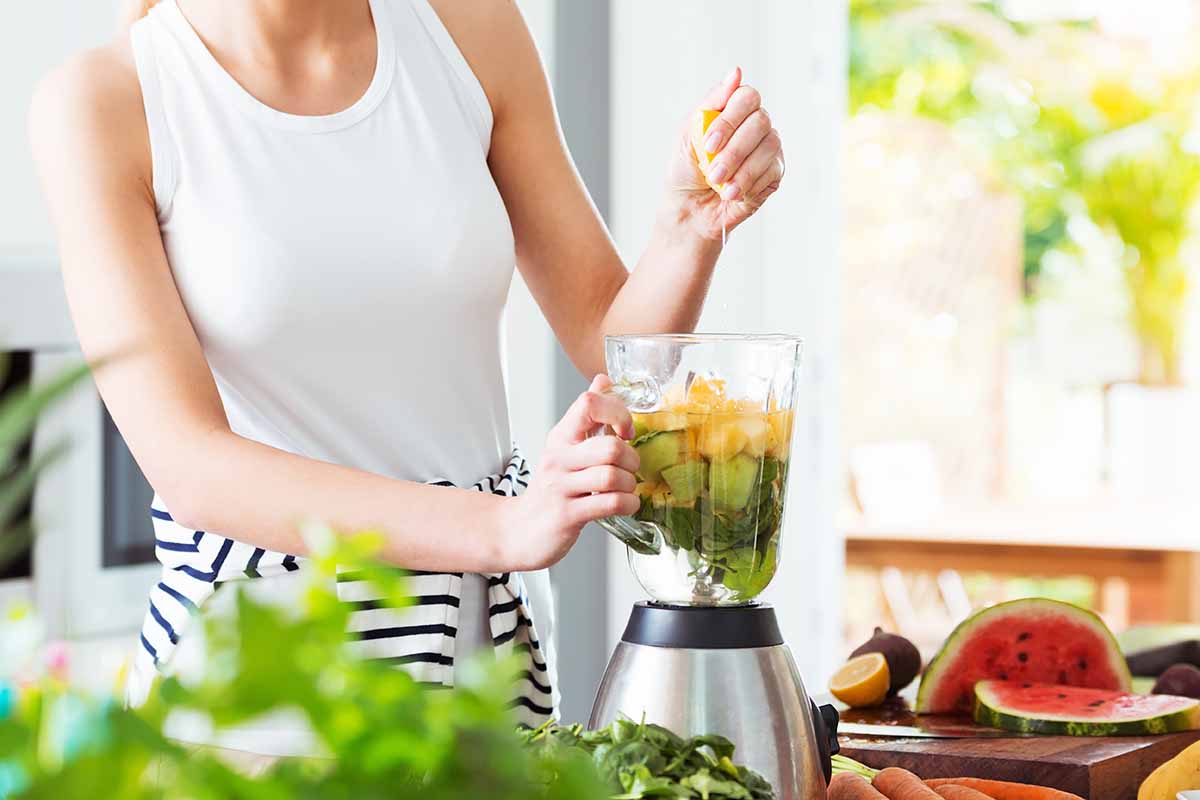We all know the story – whole grains are healthier than processed carbs made from refined flour. However, whole wheat sometimes intimidates people when it comes to making a meal.
That’s where this helpful how-to guide comes in, because the electric pressure cooker takes all of the pressure (haha) off of the cooking process when you’re in the mood for pasta!
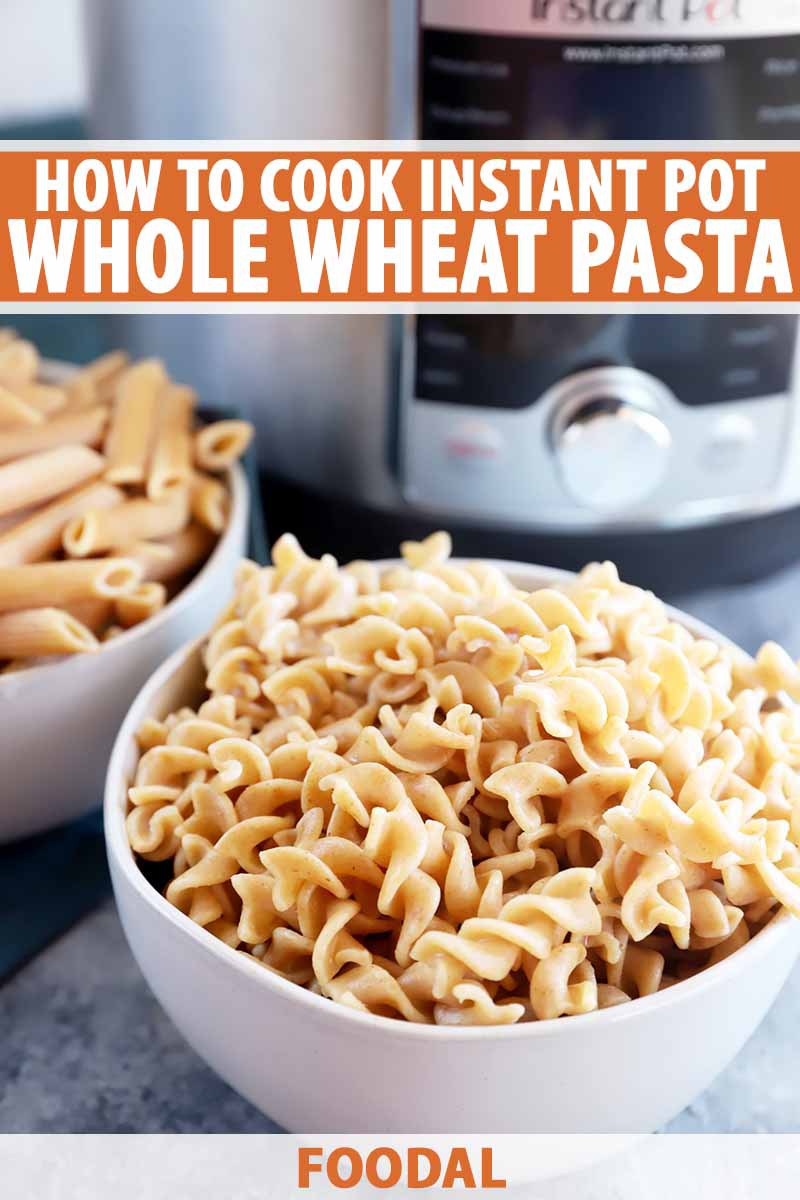
Just in case this is news to you, or you need a refresher on the benefits of whole grains, let me summarize a little bit to start.
Whole wheat products are fantastic when it comes to potentially giving yourself a boost by way of providing added protection against cardiovascular disease, type 2 diabetes, and other health complications. You get additional vitamin E, major B vitamins, antioxidants, fiber, and protein that are missing from comparable products made from refined flour.
According to the most recently updated Dietary Guidelines for Americans for 2020-2025, published in a partnership between the USDA and the US Department of Health and Human Services, food group needs should be met with nutrient-dense foods within recommended calorie limits, with at least 50 percent of a person’s daily grain intake coming from whole grains.
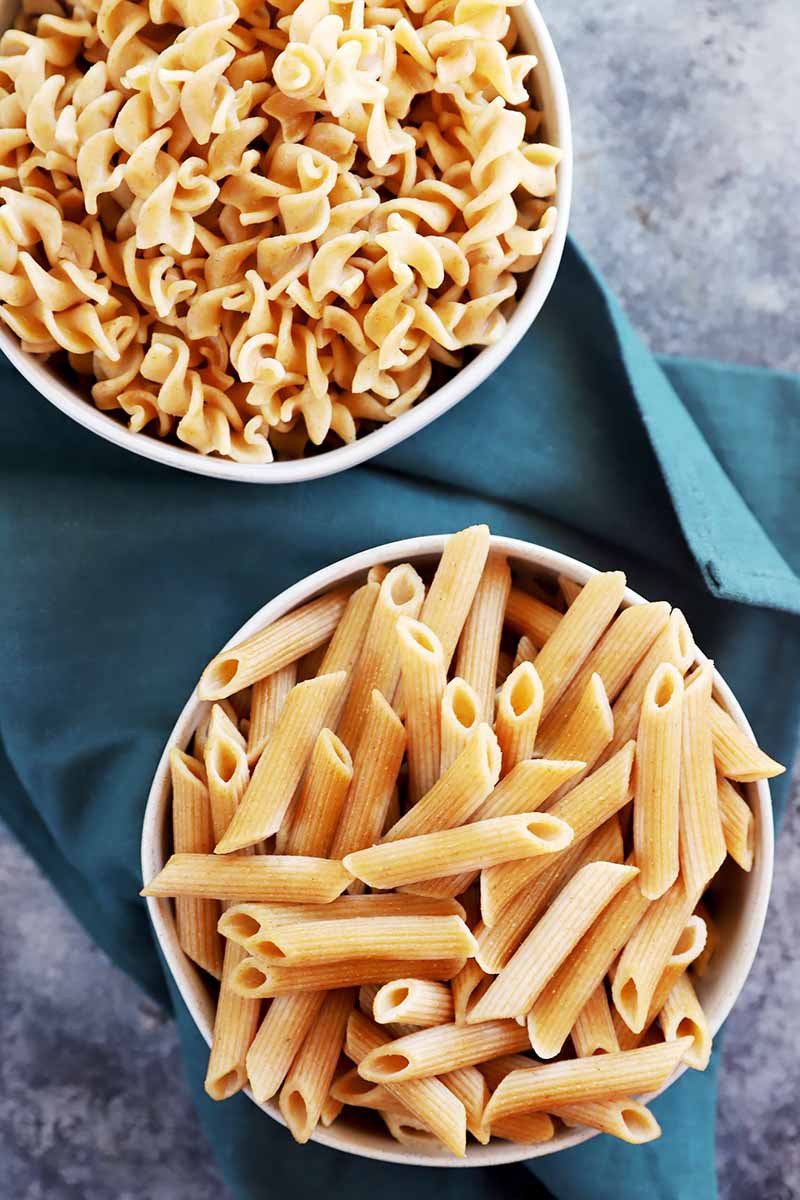
By switching to whole grain products, you are opting for something that’s a little bit healthier. Not to mention the flavor is a lot more robust, with a texture that’s a bit heartier as well.
But back to that intimidation factor. With this handy prep method, there’s no more worrying about how long it will take to make. You don’t have to stand around waiting for water to boil.
Even the classic, constant worry about all the water boiling over is gone, because you’ve got an appliance doing all the work for you, with a lid secured tightly on top!
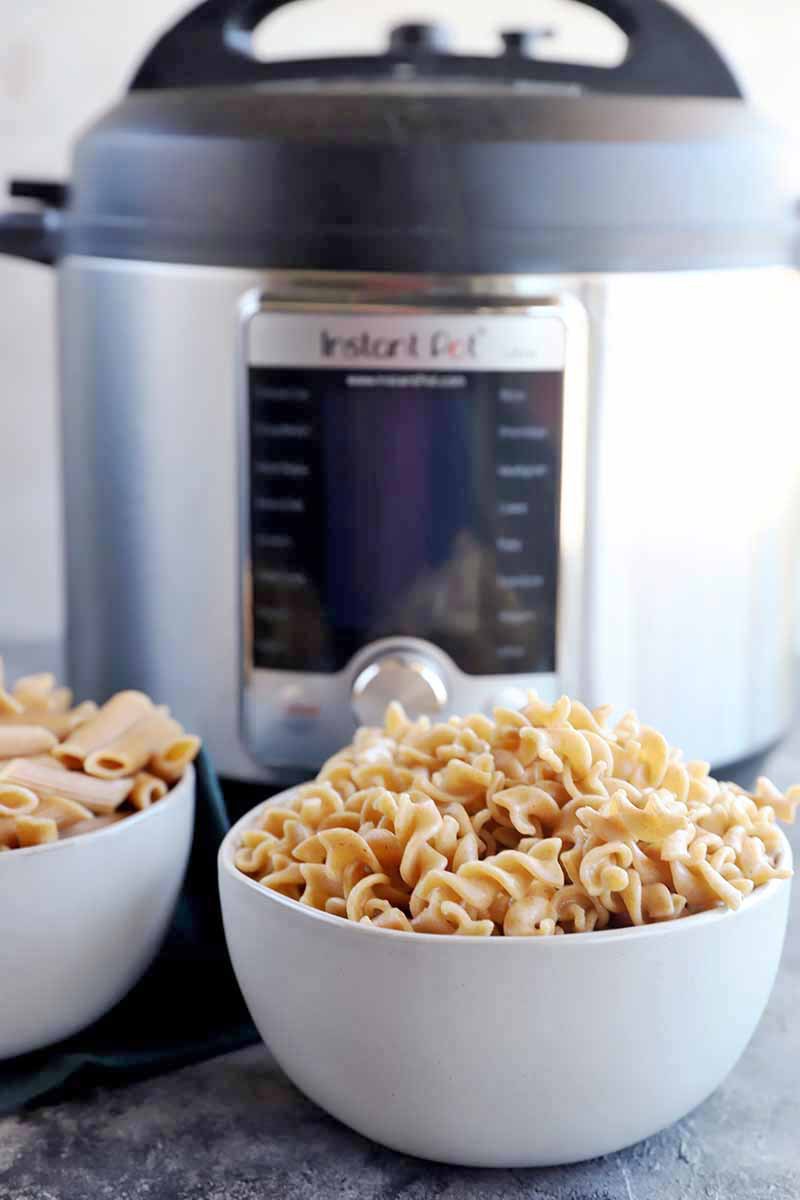
I swear, this innovative method has made it not only easier to make pasta, but easier to incorporate those tasty and hearty grains into my weekly meal routine as well. Half a box of whatever you choose can be on the table in just a handful of minutes.
No, that is not an exaggeration. It really does take that little time.
Not to mention it takes all the guesswork out of it. I love that I no longer have to pull out a piping hot noodle to take a bite and test it for doneness. Instead, whatever you’ll choose to make comes out perfectly every single time.
It’s a reliable technique for an al dente final texture that you never have to second guess, or worry about overcooking if you forget it on the stove for a minute too long.
Serving Suggestions
If you use whole wheat pasta regularly, you likely know that you can swap it in for regular pasta, no matter what recipe you might be using.
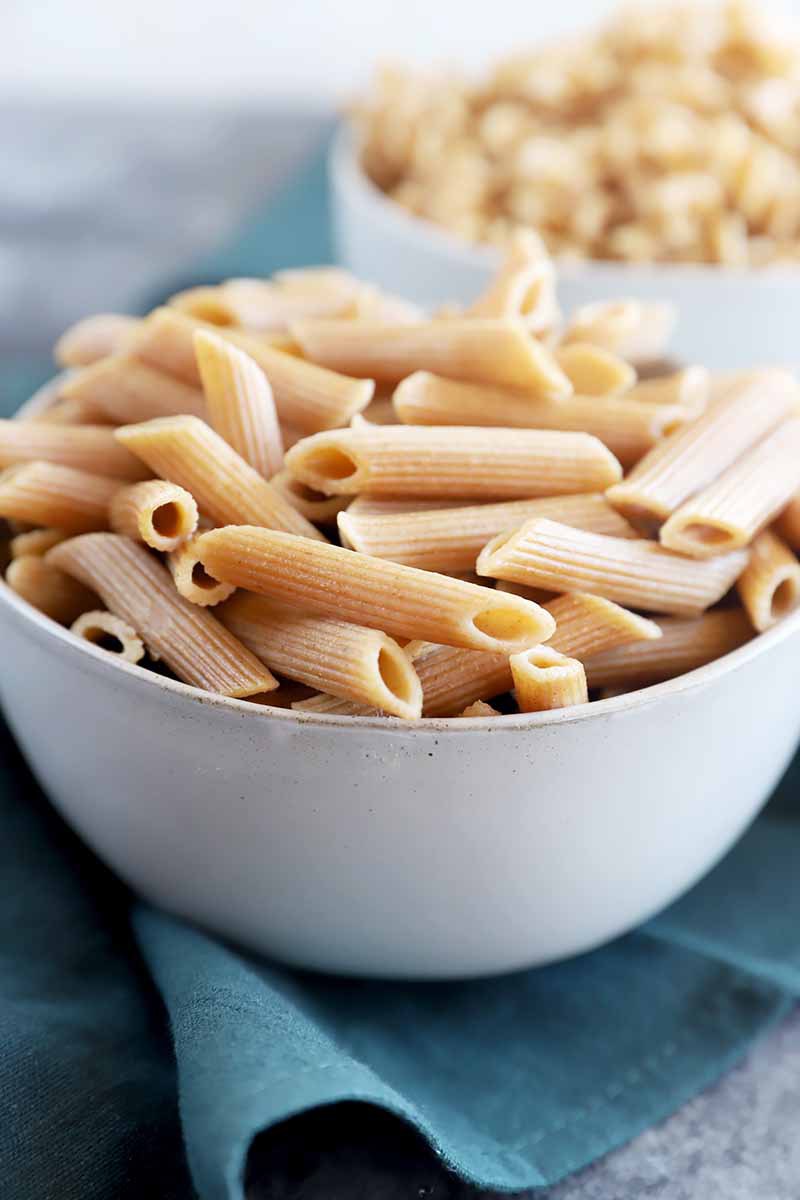
It is a fantastic alternative to use daily, as described above. Here are some ideas to get you started with these easy Instant Pot noodles:
- Incorporate it into your favorite casserole bakes, like rigatoni or ziti.
- Use in pasta salad for a heartier option. I love to make this grilled tomato and broccolini salad with the extra addition of whole grain macaroni.
- Serve it simply with your favorite sauce and a sprinkle of parmesan cheese and fresh herbs. The simpler and lighter you go with the sauce, the more you’ll be able to savor that hearty taste.
- Make macaroni and cheese. It’s a fun way to sneak in a little more healthy grains for the kiddos. They’ll never know!
With such a wide variety of serving options, you’ll find yourself reaching for whole wheat macaroni on a regular basis for meals throughout the week. Plus, when something takes only a few minutes to cook, and it’s a little healthier too, that’s a win for everybody on a busy weeknight.
How to Cook Whole Wheat Pasta in the Electric Pressure Cooker
Whole wheat tends to take more time to cook in general than its refined flour counterpart, but you can enjoy making it quickly in this appliance.
Step 1 – Measure Ingredients and Determine Cook Time
- 8 oz (1/2 box) short whole wheat pasta (penne, farfalle, cavatappi, elbow, etc.)
- 1 1/2 cups water
- 1/2 teaspoon salt
To determine the cook time for your particular shape, you first must check the instructions on the packaging.
Take the total number of minutes, divide that in half, and subtract two minutes. The final result is your total pressure cooking time, and this will yield an al dente texture.
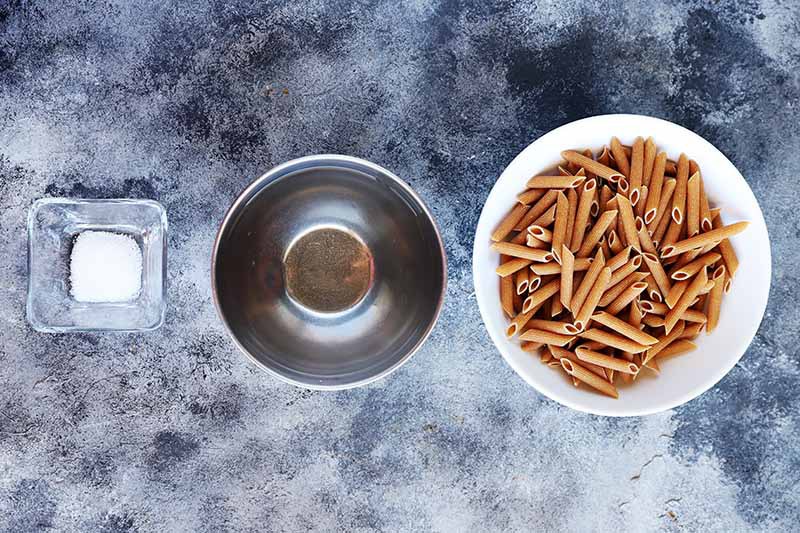
For example, an 8-minute cook time described on the packaging would translate to a 2-minute cook time in your appliance.
If you find an odd number time, simply round up your final result to get a whole number. Therefore, a 9-minute cook time on the packaging would translate to 3-minute cook time in your appliance.
Step 2 – Pressure Cook
Add the pasta, water, and salt to the pressure cooker insert. Cover and set to Manual. Cook on High pressure for the time you calculated in the previous step.
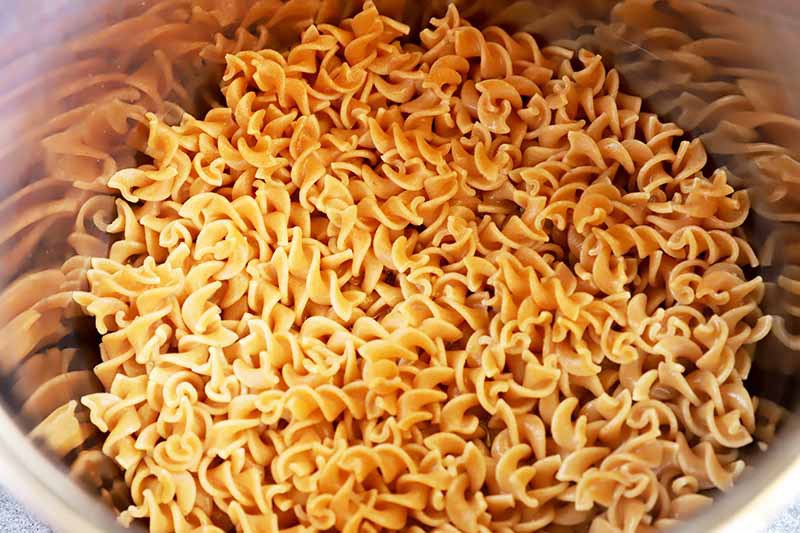
Let the pressure release naturally for 5 minutes before manually releasing any remaining pressure.
Stir the pasta well to incorporate any remaining liquid – there should be very little left. Serve as desired.
Can Pasta Be Enjoyed as Part of a Healthy Diet?
Though this popular ingredient is high in carbs, the key is balance. Obviously, if you eat only a bowl of noodles with cheese every single day, it’s not exactly healthy. As with most things in life, moderation is the way to go.
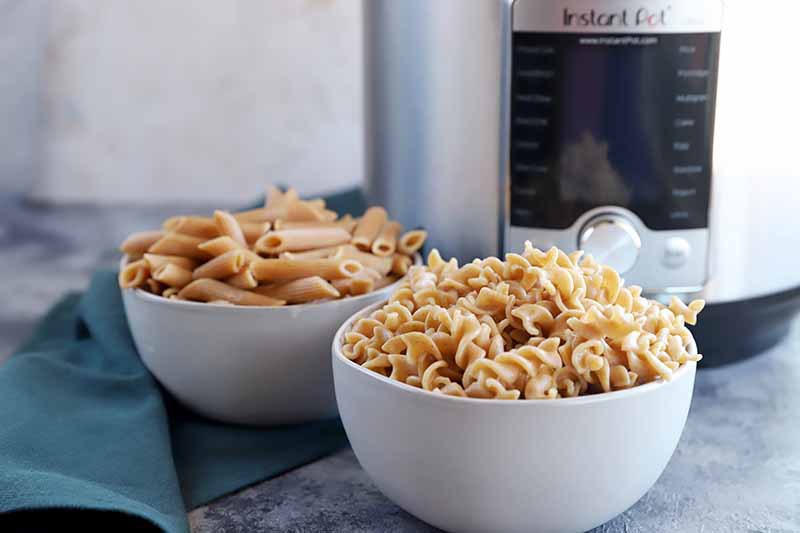
In addition to picking the healthier option, like whole wheat, it’s important to consider what you’re topping it with as well.
Instead of cream-based sauces and cheese, try a simple drizzle of olive oil, fresh herbs, and roasted vegetables. Pair it with fish or chicken breast for lean extra protein. Just like that, you can make pasta a part of your healthy lifestyle.
For more how-to guides that cover making pasta in the pressure cooker, check out the following from Foodal next:
Why do you like to eat whole grain pasta in comparison to the regular type, made with refined flour? Tell us in the comments below!
Photos by Meghan Yager, © Ask the Experts, LLC. ALL RIGHTS RESERVED. See our TOS for more details. With additional writing and editing by Allison Sidhu.
About Meghan Yager
Meghan Yager is a food addict turned food and travel writer with a love for creating uncomplicated, gourmet recipes and devouring anything the world serves up. As the author of the food and travel blog Cake 'n Knife, Meghan focuses on unique foodie experiences from around the world to right at home in your own kitchen.

